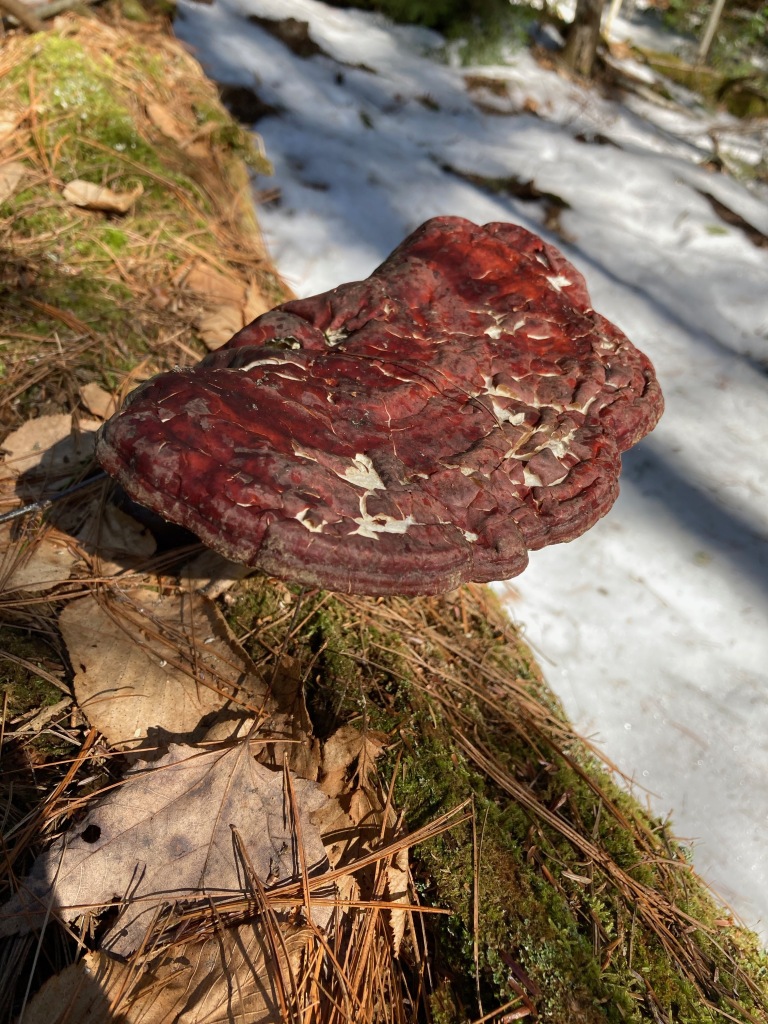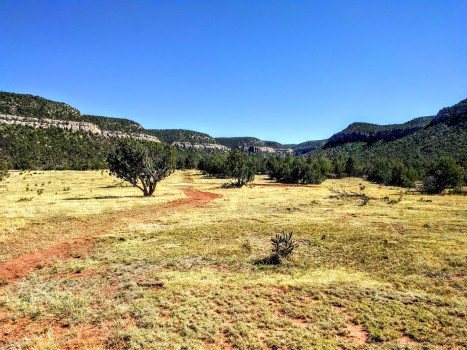I’ve run into a problem as I make my way through the Massachusetts woods to New Hampshire’s Mt. Monadnock. Each of the last two weekends, I’ve returned to the same area in the forested hills west of the Quabbin Reservoir, trying to hike a portion of the New England Trail from Cooleyville Road to Lake Wyola.
But I can’t manage to stay on the trail, and it isn’t because my internal compass malfunctions or the white-blazed trail is poorly marked. (This trail everywhere I go is in pristine shape, maintained with a high level of New England thoroughness.)
The problem, as I’ve come to understand it, is that I’m being seduced. Tie me, like Odysseus, to the ship’s mast and plug my ears. It feels like I will never be able to complete this section of the New England Trail without help.
An unhurried stream running through mature pine and hemlock forests has twice lured me away from the trail I set out to follow.
The stream runs clear; it pools alluringly; it swivels this way and that carving arced banks of out of dark, forest duff; it wears the beguiling patterns of afternoon light that sneak through low branches. And yet, what really attracts me to the West Branch of the Swift River is its aloofness. It starts in an unnamed swamp in south Wendell, then makes its way south, running alone, away from paved roads, hidden from easy access.
The stream is a bit wild, plays a little hard to get.
Here, comparing myself to Odysseus must stop. The Sirens tried to lure Odysseus to their island, singing a song that if heeded meant death. Read a bit about the Sirens, and you’ll soon find passages about the rotting flesh of sailors on rocky shores. A Siren Song is one of danger and temptation.
The West Branch sings of joy — and trout.
This early March, the trail still mostly covered with snow and ice, I set off north from Cooleyville Road in Shutesbury, noticing the Eastern Pines making up the forest were taller and bigger around than their spindlier kin on other parts of the trail I had hiked. With no houses near, and no one else around, I began thinking about the possibility of seeing a moose.

Then I heard the rushing of water to my left. I knew it must be the West Branch, and so with moose on my mind and the Swift River in my ears, I hiked past an abrupt turn of the New England Trail and continued north through alternating stands of hemlock and pines.
I passed moose tracks in the snow, found the scat of a large carnivore, and stumbled across a large red tongue of beefsteak Fungus (only made edible, I would read later, by soaking it for at least four hours in a bowl of milk.) I knew I was off track — I hadn’t seen white blazes for a while — but the older, deeper feel of the forest, plus knowing the river was ahead, kept me pushing north instead of backtracking and looking for the trail.

When I found the river, small and unassuming as it tumbled through the woods, I realized that if I was going to fish again in western Massachusetts, this is where I would do it. I grew up with a fishing father, who measured his day in two ways: Number of fish caught and number of people seen. A high first number coupled with a low second number (preferably zero) meant for success. When I’ve fished with my brother, who trained under the same success system, we do so out of sight of each other. It’s not something we say to each other; it’s what we do. Fish alone.
The West Branch of the Swift River can be fished alone, a rare river in western Massachusetts, where most water is paralleled by road, crossed by bridge, or floated by boat.
When I get home, I measure the length of this clear ribbon of water on my map. It stretches approximately four miles before it runs into the largest reservoir in Massachusetts, by some measure the largest man-made structure in New England. The Quabbin Reservoir.
I was born hating dams. Blowing them up was part of the dinner conversation about cutting down billboards and pouring Karo syrup into the fuel tanks of bulldozers. Letting rivers run free has been part of the way I see the world.
I didn’t grow up in western Massachusetts. I don’t know anyone who lived in the four towns razed to make room for the Quabbin Reservoir. Still, an allegiance with the people who lost their homes back in the 1930s because they didn’t have the political power to resist the force that is Boston is part of the small ball of resentment that forms each time I see the lake. Even when I see the blotch of blue on a map covering much of west/central Massachusetts I want to spit in scorn. All that water and not one drop goes to the surrounding communities, though Chicopee, South Hadley and Wilbraham get Quabbin water. Mostly, it’s for the thirsty folks in eastern Massachusetts, Boston and 48 other communities.
Thomas Conuel, author of An Accidental Wilderness, wrote that the quality of water in the Quabbin is “of an almost prehistoric clarity and taste.”
It all starts here. I’m miles from the New England trail, far from where I expected to be, but happy to be looking into the West Branch of the Swift River, the stream that keeps calling me to walk its banks. This stream is the headwaters that fills the toilets in Boston. It’s enough to make me want to take a leak in the river.
I don’t pee; to rage against the Quabbin and the too-many-people living in Boston is too simple a liquid response. The reservoir created the forest I am walking through. It’s on land owned by the Metropolitan District Commission, the group that runs the Quabbin. Boston gets the water, we get the forests, a young wilderness in the making. Still, it’s emotionally more satisfying if the bad guys would be unredeemable.
A week later, I try the same hike, approaching this time from the north and heading south. I scout the trail and realize that I must park a car less than a mile from where the West Branch leaves its birthplace in the little Wendell swamp. With Bruce Watson as my companion, we head south, the stream on our immediate right, singing softly. I stop often to admire the water, listen to it pour gently over the rocks. Later, I’ll read that Aglaope, one of the mythical Sirens who was daughter of the River God Achelous, sang with a lambent voice, one marked by a lightness of expression.
As I walk, talking with Bruce, who is as agreeable a conversationalist as one could ask for, while listening to the river at the same time, I pass a sharp turn on the New England Trail. We continue south along the Swift River, but the trail has headed east — not that I notice. I’m too busy talking writing with Bruce, author of The Attic (go now and subscribe for free to his weekly post about a kinder, cooler America at https://www.theattic.space/home) and being seduced by Aglaope, her of the lambent voice.
After we’ve crossed a small section of the West Branch and settled into a walk on the banks of the river, I look for the white blazes that mark the trail. There are none. I briefly consider heading back and finding where we went off course. But that makes no sense for the conversation from both sides remains too good to give up, Bruce on one side, my Siren on the other.
I’ll return another day to make the hike from Cooleyville Road to Lake Wyola. I know the route now. If I find myself off track, it’ll be by choice, willingly seduced by a river that clearly sings my song.
